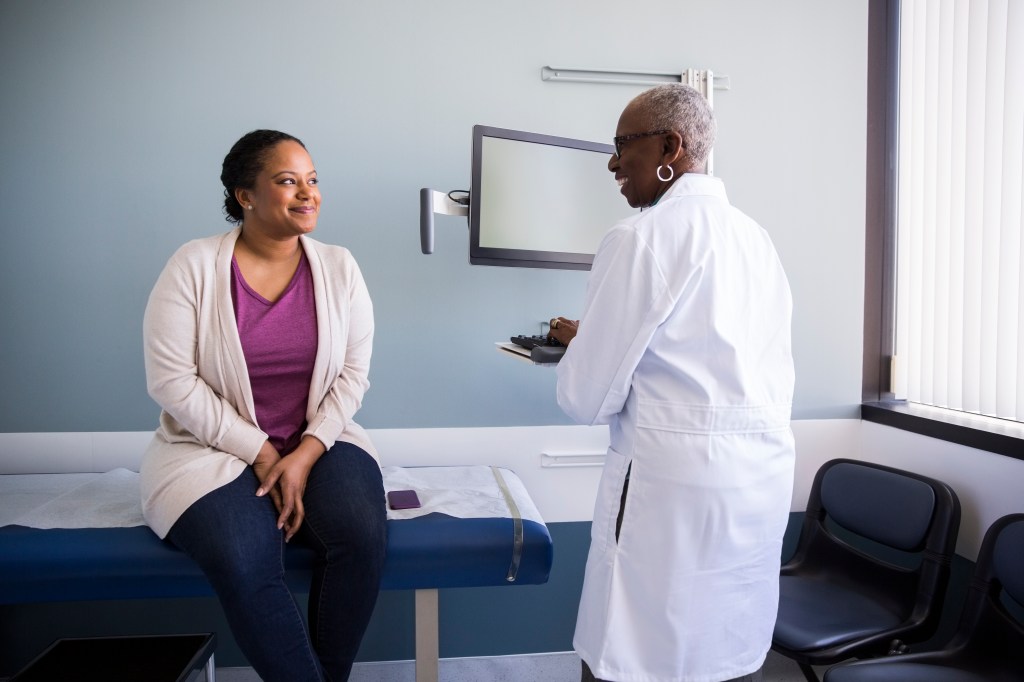Triple-negative breast cancer: risks, signs and symptoms, and diagnosis
Learn about this aggressive type of breast cancer, including risk factors, signs and symptoms
October 3, 2023

Breast cancer is the most common cancer in women in the U.S. outside of skin cancers. It accounts for about 1 in 3 of all new cancers in people assigned female at birth each year, and about 1 in 8 females in the U.S. will develop breast cancer over the course of their lifetime. There are many different types and subtypes of breast cancer that are defined by where in the breast they begin, how much they have grown or spread and how they behave. One of the more aggressive types is triple-negative breast cancer (TNBC).
What’s triple-negative breast cancer?
While some people with breast cancer may test positive for three receptors, or proteins, that make cancer grow (estrogen receptors, progesterone receptors, or overexpression of human epidermal growth factor receptor 2, known as HER2), people with TNBC test negative for all three.
In the U.S. in 2023, an estimated 297,790 patients will be diagnosed with breast cancer
of people with breast cancer will be diagnosed with TNBC
TNBC characteristically has a high recurrence rate within the first five years after diagnosis.
Who’s at risk for triple-negative breast cancer?
Primary risk factors for TNBC include:
- Race/ethnicity: Non-Hispanic Black women are nearly two times as likely to have TNBC as non-Hispanic white women.
- Age: TNBC is more common in women younger than 40.
- Sex: People assigned female at birth are at higher risk for TNBC compared to people assigned male at birth.
- Genetic mutations: Mutations in genes such as BRCA1 and BRCA2 are strongly associated with TNBC.
What are the signs and symptoms of breast cancer?
TNBC can have the same signs and symptoms as other common types of breast cancer.
Most breast cancers are detected before any symptoms appear through regular breast cancer screenings. The signs and symptoms of breast cancer differ from person to person, and some will never show symptoms.
However, some signs of breast cancer to watch out for include:
- Swelling of all or part of a breast
- Skin dimpling
- Breast or nipple pain
- Nipple retraction
- Nipple or breast skin that’s red, dry, flaking or thickened
- Nipple discharge
- Swollen lymph nodes, under the arm or near the collar bone

How is breast cancer diagnosed?
If you’re experiencing symptoms, speak with your doctor, especially if you have a higher risk of having TNBC. Some screening tests include:
- Mammogram: An X-ray of the breast that allows doctors to look for changes in breast tissue. Mammograms can often find breast cancer early when it’s easiest to treat.
- Magnetic resonance imaging (MRI): An MRI uses radio waves and strong magnets to make detailed pictures of the inside of the breast. Doctors use MRIs along with mammograms to screen people who are considered at high risk for breast cancer.
- Ultrasound: An ultrasound uses sound waves and their echoes to make computer pictures of the inside of the breast. While not typically used as a routine screening test for breast cancer, an ultrasound can be useful for looking at some breast changes such as lumps – especially when they can be felt but not seen on a mammogram.
- Biopsy: After a breast cancer diagnosis is made with a biopsy, a health care provider may determine whether a patient has TNBC with an assessment of cells from that biopsy, which are checked for estrogen, progesterone and HER2 receptors, to determine the cancer subtype.
How is triple-negative breast cancer staged?
Doctors use five stages to classify triple-negative breast cancer and inform next steps in your care plan:
Stage 0
Cancers diagnosed at stage 0 are confined to the milk ducts and lobes of the breast. When diagnosed at stage 0, TNBC is considered non-invasive breast cancer, and 91% percent of people diagnosed with localized TNBC are alive five years after diagnosis.
Stage 1
Cancers diagnosed at stage 1 are small, localized and have not spread beyond one nearby lymph node. Stage 1 TNBC is still considered early stage, so 91% percent of people diagnosed with this stage of cancer are alive five years after their diagnosis. Stage 1 cancer can be classified as either stage 1A or stage 1B dependent on the size of the tumor and whether there is evidence of cancer on the nearby lymph nodes.
Stage 2
Stage 2 TNBC may have spread regionally (beyond the initial site), but not beyond the lymph nodes in the underarm area. Stage 2 cancer can be classified as either stage 2A or stage 2B dependent on the size of the tumor and whether the breast cancer has spread to the lymph nodes. For patients whose cancer has spread to regional lymph nodes, 66% percent of people diagnosed are still alive five years after their diagnosis.
Stage 3
Stage 3 TNBC has extended beyond the immediate region of the tumor and may have invaded nearby lymph nodes and muscles but has not spread to distant organs. At this stage, TNBC can be classified as stage 3A, 3B or 3C, depending on the size of the tumor and how far it has spread. Stage 3 TNBC is considered to have spread regionally, so 66% percent are still alive five years after diagnosis.
Stage 4
Stage 4 TNBC, also known as metastatic breast cancer, has spread distantly to other areas or organs of the body, such as the brain, bones, lung or liver. This stage is not curable but is usually treatable, and current advances in research and medical technology mean that more people are living longer by managing the disease as a chronic illness. Twelve percent of patients diagnosed at this stage survive five years post-diagnosis.

Being diagnosed with TNBC can be scary. By speaking with your care team, you can better understand your options and the best path forward.


